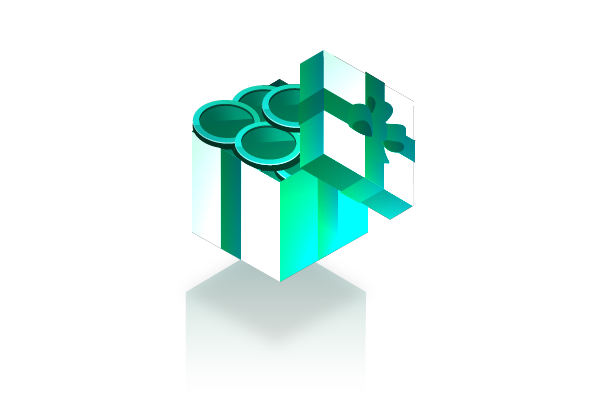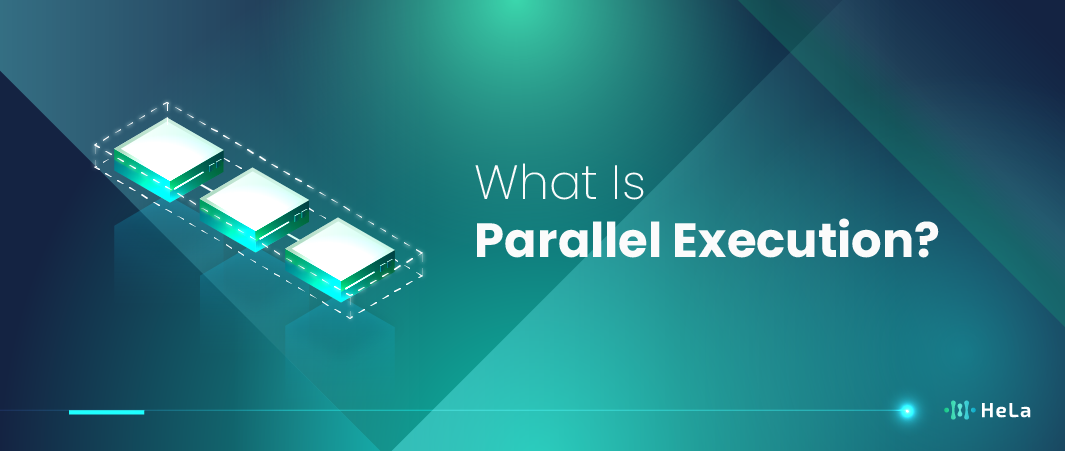In today’s fast-paced world, optimizing tasks and processes for efficiency has become more crucial than ever. That’s where the concept of parallel execution comes into play. So, what is parallel execution? It’s essentially the practice of breaking down tasks into smaller parts and running them concurrently, side by side, to save time and boost productivity.
Imagine you’re juggling multiple tasks, like cooking dinner, doing laundry, and checking emails. Instead of doing them one after the other, parallel execution allows you to chop vegetables while the washing machine is running and respond to emails simultaneously. This approach isn’t limited to household chores; it applies to computer programs, scientific simulations, and more. By distributing the workload and tackling tasks concurrently, you can significantly cut down on waiting time, making parallel execution a game-changer in various domains.
To grasp the potential benefits better, think about a scenario where a single chef prepares a meal for a large restaurant. Without parallel execution, they’d cook one dish at a time, leading to long wait times for hungry customers. However, with parallel execution, multiple chefs collaborate to cook different parts of the meal simultaneously, resulting in quicker service and satisfied patrons. So, whether you’re managing tasks in your daily life or optimizing complex systems, understanding and implementing parallel execution can be a game-changer that saves you time and effort.
What Is Parallel Execution?
Parallel execution in computing and technology is a fundamental concept that plays a crucial role in optimizing the performance of various computational tasks. It is especially important in scenarios where time efficiency is critical, such as data processing, scientific simulations, and real-time applications like video rendering or complex mathematical calculations.
In a parallel execution environment, tasks are divided into smaller subtasks or threads, which can be executed independently on separate processors or cores. This approach allows for the efficient utilization of available hardware resources, as multiple tasks can be carried out simultaneously, thus reducing overall execution time.
Also Read: What is Stack Mobile? A Detailed Usage Guide
Consider a real-world example: rendering a high-definition 3D animation. Instead of rendering each frame sequentially, which could take a significant amount of time, parallel execution enables the distribution of rendering tasks across multiple processor cores. Each core works on rendering a different frame concurrently, significantly speeding up the overall rendering process.
Parallel execution can be achieved through various methods and technologies, including multi-core processors, multi-threading, distributed computing, and parallel programming frameworks. Each of these approaches has its own advantages and trade-offs, depending on the specific requirements of the task at hand.
In summary, parallel execution is a fundamental concept in computing that harnesses the power of multiple processors or cores to perform tasks concurrently, improving performance and reducing execution time in various computational scenarios. It’s a critical technique in modern computing that allows us to leverage the full potential of today’s hardware resources.
How Does Parallel Execution Work?
Parallel execution is a fundamental concept in the world of computing that aims to improve the efficiency and speed of processing tasks. It leverages the power of multiple processors or CPU cores to handle multiple tasks simultaneously, rather than executing them sequentially one after another.
To draw a more detailed analogy, imagine you have a complex computer program that needs to perform various calculations, data processing, and file handling operations. If you were to execute this program sequentially, it would process each task one at a time, waiting for one to finish before moving on to the next. This can be time-consuming, especially when dealing with large datasets or resource-intensive operations.
Now, let’s bring parallel execution into play. In a parallel computing environment, the program is divided into smaller, independent tasks or threads, and each of these threads is assigned to a separate processor core or CPU. These cores work concurrently, processing their respective tasks simultaneously.
For example, one core might be responsible for performing complex mathematical calculations, another core could handle data retrieval from a database, and a third core might be tasked with processing user input. All of these operations happen simultaneously, and the results are combined or synchronized as needed.
The benefits of parallel execution are clear. It significantly reduces the overall execution time of the program, as tasks are no longer waiting for others to finish before they can proceed. This makes parallel execution ideal for computationally intensive applications such as scientific simulations, video rendering, and data analysis, where the speed of processing is crucial.
However, it’s essential to note that not all tasks can be parallelized effectively. Some operations depend on the results of previous ones or require access to shared resources, making them inherently sequential. In such cases, optimizing for parallel execution may require careful design and synchronization mechanisms to ensure that the different threads or cores work together seamlessly without conflicts or data corruption.
Parallel execution in computing is like having a team of specialized workers tackling different aspects of a task simultaneously, resulting in faster and more efficient processing of complex operations.
The Benefits of Parallel Execution

The benefits of parallel execution are significant and diverse, offering advantages in various aspects of computing and data processing. Here’s a detailed look at each of these benefits:
Speed and Efficiency
Parallel execution dramatically increases the speed at which tasks can be completed. This is especially true for complex calculations, data processing, and simulations. By dividing tasks among multiple processors or cores, parallel execution reduces the time required for each task, leading to a substantial increase in overall productivity.
Scalability
One of the key advantages of parallel execution is its scalability. As the workload grows, you can simply add more processors or cores to manage the additional load. This ensures that the system can maintain efficiency and performance even as demands increase, making it ideal for growing or fluctuating workloads.
Resource Optimization
By distributing tasks across multiple processors, parallel execution optimizes the use of available resources. This leads to more efficient use of energy and can reduce costs related to hardware maintenance and power consumption. It’s an effective way to maximize the potential of the hardware while minimizing waste.
Improved Performance
Many modern applications, from video editing and scientific simulations to data analytics, rely heavily on parallel execution. This is because parallel processing can significantly enhance the performance and responsiveness of these applications. Users experience faster processing times and smoother operation, which is crucial in fields where time and accuracy are of the essence.
Fault Tolerance
Parallel execution can also contribute to improved fault tolerance. In a parallel system, if one processor or core fails, the others can continue to operate. This means that critical tasks are less likely to be interrupted by hardware failures, ensuring continuous operation and reliability. This aspect is particularly important in systems where uptime and reliability are critical, such as in server environments or in critical infrastructure management.
Overall, parallel execution represents a significant step forward in computing, offering improvements in speed, scalability, resource utilization, performance, and reliability. This makes it an invaluable tool in a wide range of applications and industries.
Challenges and Considerations in Implementing Parallel Execution

In the realm of parallel execution, a multitude of complexities and potential pitfalls await those who venture into the world of concurrent processing. This section will delve into these challenges and considerations to provide a comprehensive understanding of the intricacies involved in harnessing the power of parallel computing. Here, we explore various facets of parallel execution, shedding light on topics such as synchronization issues, the overhead associated with managing multiple threads or processes, data consistency challenges, and the formidable task of debugging parallel programs.
1. Synchronization Issues
One of the primary challenges in parallel execution is ensuring that multiple threads or processes work seamlessly together to avoid conflicts and race conditions. Synchronization mechanisms such as locks, semaphores, and barriers are essential tools for managing access to shared resources. However, improper synchronization can lead to deadlocks, livelocks, and performance bottlenecks.
2. Overhead of Managing Multiple Threads/Processes
Implementing parallel execution introduces overhead in terms of thread/process creation, context switching, and communication between threads/processes. This overhead can sometimes negate the benefits of parallelism, making it crucial to strike a balance between parallelism and overhead.
3. Data Consistency Challenges
Maintaining data consistency in parallel programs can be challenging. When multiple threads or processes access and modify shared data concurrently, it can lead to data corruption or unpredictable behavior. Techniques such as atomic operations, transactional memory, and fine-grained locking are used to address these issues.
4. Debugging Parallel Programs
Debugging parallel programs is notoriously difficult. Identifying and reproducing concurrency-related bugs can be a daunting task. Traditional debugging tools may not be sufficient, necessitating the use of specialized debugging techniques and tools designed for parallel environments.
5. Specialized Programming Skills
Effective implementation of parallel computing solutions requires specialized programming skills. Developers need a deep understanding of parallel programming models, such as multithreading, multiprocessing, GPU programming, and distributed computing. Proficiency in parallel programming languages and libraries, such as OpenMP, MPI, CUDA, and Hadoop, is also essential.
6. Choosing the Right Parallelization Strategy
Selecting the appropriate parallelization strategy for a given task is critical. Different problems may benefit from different parallel computing models, and choosing the wrong one can result in inefficient or non-scalable solutions. Careful analysis and consideration of the problem domain are necessary to make informed decisions.
Also Read: 10 Best Crypto for Transactions in 2024
Parallel execution offers the promise of improved performance and scalability, but it comes with a host of challenges and considerations. From synchronization intricacies to the overhead of managing parallelism, data consistency dilemmas, debugging difficulties, the need for specialized skills, and strategic decision-making, navigating the parallel computing landscape requires careful planning and expertise. A comprehensive understanding of these challenges is essential for successfully harnessing the potential of parallel execution in computing environments.
Future of Parallel Execution in Emerging Technologies

The future of parallel execution in emerging technologies is a topic of great significance as we navigate the ever-evolving landscape of computing and data processing. As we explore this subject, it becomes apparent that parallel execution is poised to play a pivotal role in unlocking the potential of various cutting-edge fields.
- AI Advancements: Parallel execution is set to accelerate AI advancements, enabling the development of larger and more complex models for tasks like deep learning and real-time decision-making.
- Machine Learning Boost: Parallelism will continue to be crucial in machine learning, facilitating faster model training, hyperparameter optimization, and efficient processing of vast datasets.
- Big Data Analytics: In the realm of big data analytics, parallel processing frameworks like Apache Hadoop and Apache Spark will play a pivotal role in processing and extracting insights from large datasets, with a focus on scalability and efficiency.
- Quantum Computing: Quantum parallelism will be at the core of quantum computing’s capabilities, enabling the solution of complex problems at unprecedented speeds, impacting fields like cryptography and optimization.
- Hardware Innovations: Advancements in multi-core processors, GPUs, and specialized accelerators will provide the foundation for parallel execution, meeting the growing demand across emerging technologies.
- Parallel Programming: Innovations in programming frameworks, libraries, and languages will make parallelism more accessible, empowering developers to utilize parallel resources efficiently and effectively.
Parallel execution will continue to be a driving force in emerging technologies, particularly in AI, machine learning, big data analytics, and quantum computing. Hardware improvements and advancements in parallel programming will shape the future landscape, enabling new possibilities in computing and data processing.
Conclusion
In conclusion, parallel execution is a powerful concept that has revolutionized the world of computing and technology. Its ability to execute multiple tasks simultaneously offers significant benefits, including speed, scalability, resource optimization, improved performance, and fault tolerance. Understanding parallel execution and its applications is essential for anyone looking to optimize their tasks and processes in today’s fast-paced world.
Whether you’re a programmer, a data scientist, or simply curious about the world of technology, knowing what parallel execution is and how it works can be a valuable asset. As technology continues to advance, parallel execution will play an increasingly crucial role in shaping the way we work and interact with computers and systems. Embracing this concept can lead to improved efficiency and productivity in various domains, making it a topic worth exploring further.
Disclaimer: The information provided by HeLa Labs in this article is intended for general informational purposes and does not reflect the company’s opinion. It is not intended as investment advice or recommendations. Readers are strongly advised to conduct their own thorough research and consult with a qualified financial advisor before making any financial decisions.

Joshua Soriano
I am a writer specializing in decentralized systems, digital assets, and Web3 innovation. I develop research-driven explainers, case studies, and thought leadership that connect blockchain infrastructure, smart contract design, and tokenization models to real-world outcomes.
My work focuses on translating complex technical concepts into clear, actionable narratives for builders, businesses, and investors, highlighting transparency, security, and operational efficiency. Each piece blends primary-source research, protocol documentation, and practitioner insights to surface what matters for adoption and risk reduction, helping teams make informed decisions with precise, accessible content.
- Joshua Soriano#molongui-disabled-link
- Joshua Soriano#molongui-disabled-link
- Joshua Soriano#molongui-disabled-link
- Joshua Soriano#molongui-disabled-link

